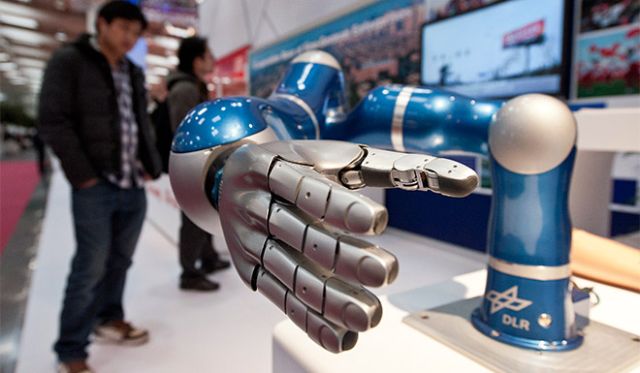
‘Don’t let ‘robophobia’ deter manufacturing, export strategy for growth’
United Nations : The threat to jobs from automation was overstated and “robophobia” should not deter countries from adopting a manufacturing and exports based strategy for rapid economic growth, according former Niti Aayog vice chairperson, Arvind Panagariya.
“One should not freeze in to inaction on account of ‘robophobia’ from following the path of manufacturing and exports that had led some of the Asian countries out of poverty,” Panagariya said on Monday while addressing the UN General Assembly’s committee on economic and financial issues.
“Countries easily have a 15-year window to pursue manufacturing and exports based strategy.”
The technologies have to be invented or developed and then they have to commercialised before robots can replace workers, he said.
Panagariya, who left the Niti Aayog late August and was now back at the Columbia University where he is the professor of economics holding the Jagdish N. Bhagwati chair of Indian Political Economy.
Fresh from a 32-month stint helping develop economic policies and direction for India, he was invited by the General Assembly committee to deliver the keynote address on “Road to Rapid Economic Transformation” at its inaugural meeting of the current session.
“Rapid economic growth held the key to elimination of poverty by both raising incomes and increasing the resources available to governments for investing in social programmes.
“Today there is scepticism about whether countries can repeat the performances of countries like South Korea and Taiwan by following their models of growth because of fears of automation and growing protectionism in the industrialised countries.
“We overstate because we can see what jobs automation will destroy (but) we cannot see what jobs automation will actually create. I draw on the history… No automation of the past has actually cut jobs. It has made us only busier and busier,” the former vice chairperson added.
While there were adjustments to be made in the short term, medium to long-run automation made the “labour market more intense,” he said.
There were some areas like making clothes or some technology manufacturing where robots cannot do the work of human beings and these were in labour-intensive sectors that have an important role in the early phase of high growth, Panagariya said.
As for fears of protectionism, he said that what matters to most countries is whether they can “capture a slightly larger piece of the gigantic world exports pie” than the changes to its size.
“The global market in merchandise and services exports is about $22 trillion and whether it expands to $25 trillion or shrinks to $20 trillion in the next five to seven years matters less compared to growing their share of the market by countries.”
For example, it was more important for India has to work on growing its share of the global market from the current 1.7 per cent to 5 to 7 per cent, he added.
In pursuing the UN goals of sustainable development, according to Panagariya, income redistribution alone would not go far in alleviating poverty without economic growth.
Only five countries — Japan, South Korea, Taiwan, Singapore. China — have grown at rates of 8 to 10 per cent over two decades and were able to rapidly transform themselves from traditional to modern societies practically eliminating poverty, he said.
“They were able to achieve in two or three decades what had taken the western industrialised nations a century.”
India seems to be the sixth country to be on that kind of a growth path, having grown at an average rate of 7.8 per cent over the last 14 to 15 years.
Although economists tend to underplay the role of leadership, it is the key factor in helping countries achieve high growth, he added.
(Arul Louis can be reached at arul.l@ians.in)
—IANS
